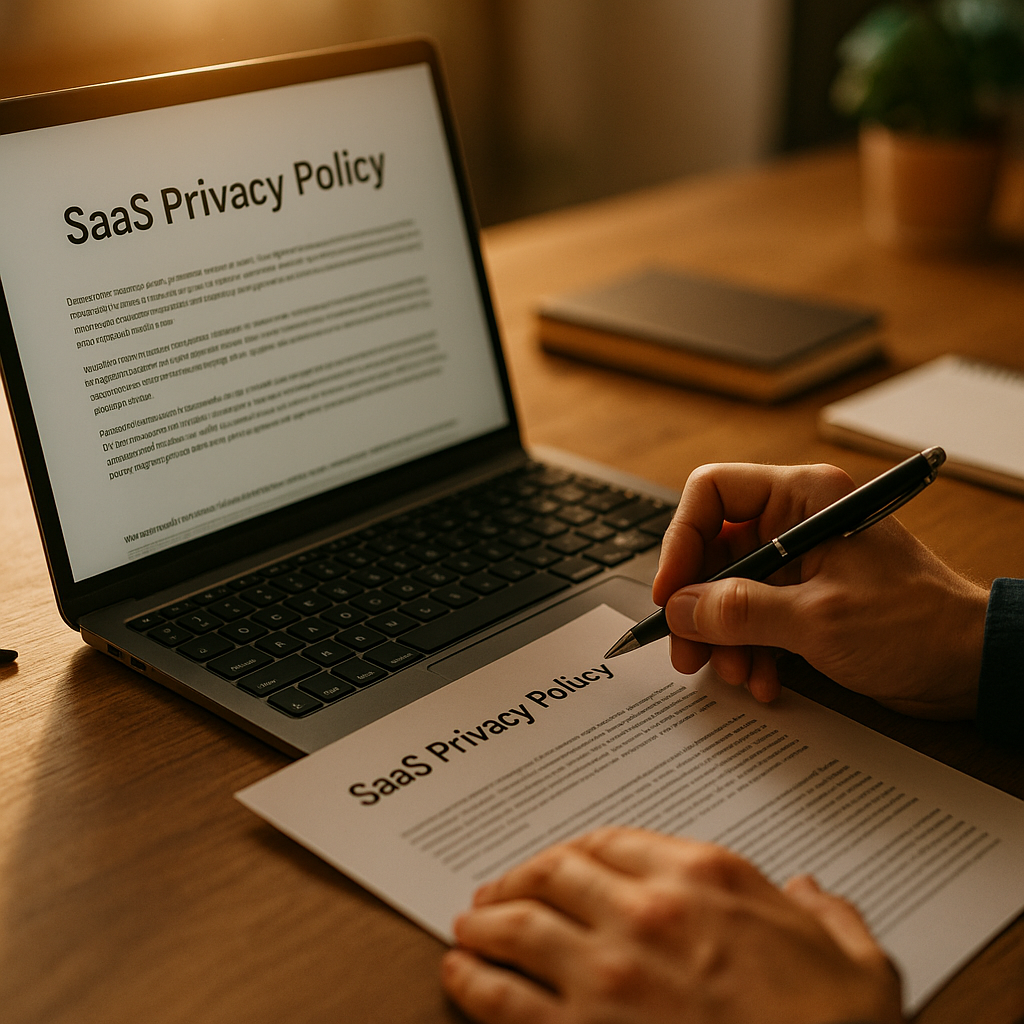Creating a clear and concise privacy policy for your SaaS product is vital for building user trust, ensuring legal compliance, and supporting business growth. A well-crafted privacy policy reassures customers about how their data is handled and demonstrates your company’s professionalism. Ready to set your SaaS apart? Discover the steps to draft a transparent, effective privacy policy below.
Why SaaS Privacy Policies Matter for User Trust
User trust is the cornerstone of a successful SaaS product. When users sign up for your software service, they entrust you with sensitive data. According to a 2025 McKinsey survey, 82% of B2B SaaS customers rank data protection as a top priority when choosing a software provider. A clear, concise SaaS privacy policy not only sets expectations but also shows your commitment to transparency and ethical data practices.
Transparent policies reduce anxiety about data misuse. They also make support and compliance easier by reducing ambiguity. By implementing a strong privacy policy, you signal to current and future customers that their information is in safe hands, increasing satisfaction and retention rates.
Key Elements to Include in a SaaS Privacy Policy
Your SaaS privacy policy should address every aspect of data usage, aligned with regulations such as GDPR, CCPA, and other region-specific rules. Here’s what to cover:
- Personal Data Collected: Specify the types of information (e.g., names, emails, payment details) your app collects.
- How Data Is Used: Explain why and how user data is processed—such as account creation, analytics, or support.
- Data Storage and Security: Outline where data is stored (e.g., cloud providers), encryption practices, and data retention periods.
- User Rights: Describe user options, including data access, correction, deletion, or withdrawal of consent.
- Third-Party Sharing: Identify partners and scenarios where data may be shared, including subprocessors and software integration tools.
- International Transfers: For global SaaS products, address how cross-border data flows comply with relevant laws.
- Policy Updates: Clarify how users will be notified about privacy policy changes and what actions are required.
Including these elements ensures accuracy and completeness—essential for compliance and user clarity.
Best Practices for Writing a Concise SaaS Privacy Document
Complex legal jargon repels users and erodes trust. Write your SaaS privacy policy in clear, accessible language. Follow these best practices:
- Be Direct: Use short sentences and bullet points to convey key information quickly.
- Structure Logically: Group related information (like data collection and usage) under easily navigable headings.
- Define Terms: Clarify technical or legal terms on first use to avoid misinterpretation.
- Personalize for Your Business: Tailor the content to your actual data flows and operations rather than using generic templates.
Microsoft’s Clarity guidelines, updated in 2025, suggest reading content aloud to catch overcomplicated phrases. Aim for a reading grade level of 9 or below. Remember, transparency and brevity foster stronger customer relationships.
Legal Compliance Considerations for SaaS Privacy Policies
Regulatory requirements for SaaS privacy policies have become stricter in 2025. Non-compliance can result in fines, lawsuits, and loss of customer trust. Here’s how to stay aligned:
- Stay Informed: Consult up-to-date resources on global data privacy regulations, such as GDPR (Europe) and CCPA (California).
- Use Regulatory Checklists: Verify your policy includes mandatory disclosures, user rights information, and complaint mechanisms required in your markets.
- Seek Legal Review: Have legal counsel review your draft before publishing to ensure accuracy and completeness.
- Keep It Updated: Review your policy at least yearly, especially after new feature rollouts or changes in law.
Being proactive demonstrates respect and responsibility, which feeds directly into your brand’s reputation.
How to Clearly Communicate Policy Updates to SaaS Users
Policy updates are inevitable. The way you communicate these changes can strengthen or weaken user trust. Here’s how to do it right:
- Advance Notification: Notify users of significant changes before they take effect, giving ample time to review and respond.
- In-Product Messaging: Use banners or pop-ups within your SaaS dashboard for maximum visibility.
- Email Summaries: Send concise update emails, linking both to the full policy and a summary of main changes.
- Explain the Reasons: Share why updates were made, such as the addition of new features or regulatory changes.
Effective communication during updates builds a sense of partnership with your customers, showing you value their awareness and consent.
FAQs About Writing a SaaS Privacy Policy
-
How often should I update my SaaS privacy policy?
Review your privacy policy at least annually or whenever you introduce new features, integrate third-party services, or when relevant data regulations change. -
Do all SaaS products need a privacy policy?
Yes. A privacy policy is legally required in many jurisdictions, and it’s essential for building user trust regardless of your SaaS’s size or audience. -
What’s the best format for a privacy policy on my SaaS website?
Publish your policy as a standalone, easily accessible page—link to it in the footer, signup forms, and any onboarding materials. -
Can I use a generic privacy policy template?
While templates help you get started, a generic policy isn’t sufficient. Customize yours to reflect your specific data practices and legal requirements. -
Who should review my SaaS privacy policy before publishing?
Involve your compliance or legal team. For startups, consider consulting an attorney familiar with SaaS and data privacy laws relevant to your markets.
A clear and concise privacy policy is a non-negotiable foundation for any SaaS product. By focusing on transparency, legal compliance, and user communication, you not only fulfill regulatory requirements but also gain a competitive advantage through earned user trust.
